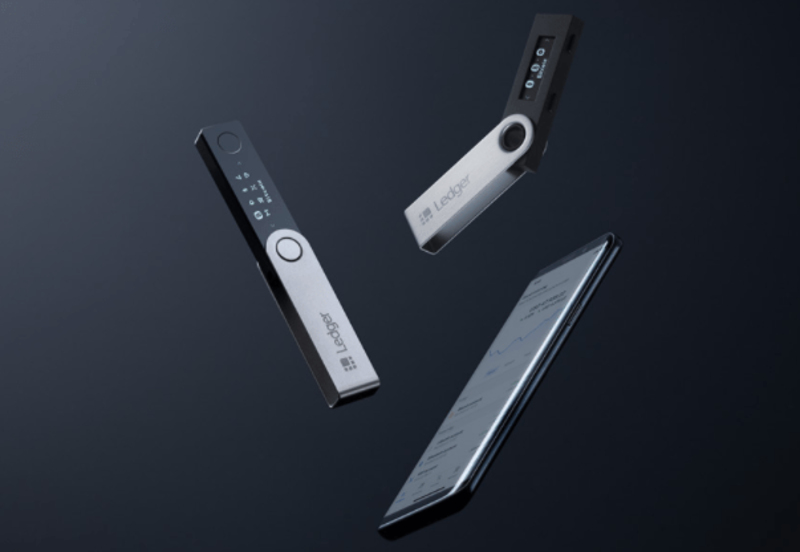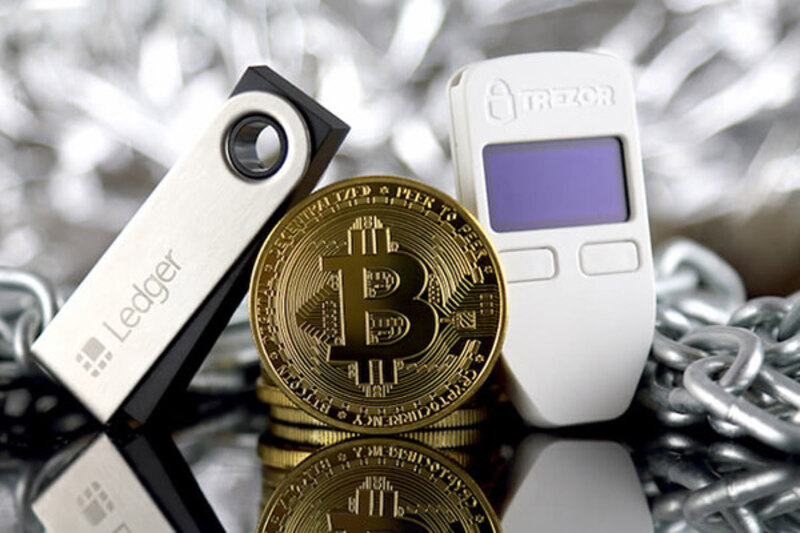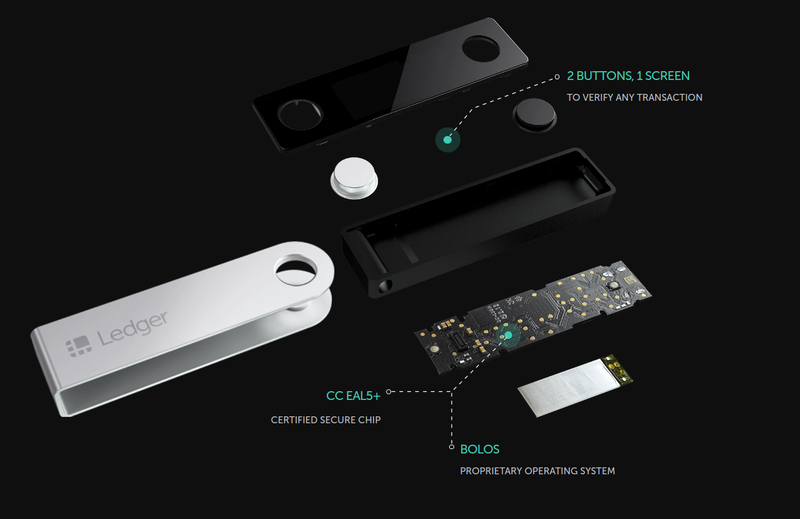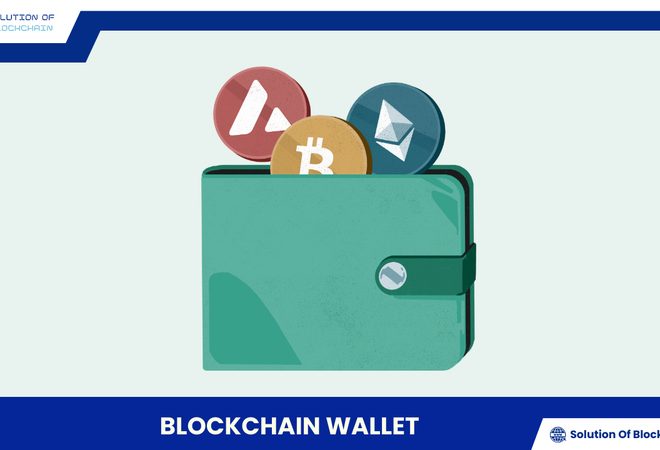
Understanding different cold wallet types
Cold wallets, with their secure offline storage capabilities, help you protect your crypto assets from potential threats. But with the variety of cold wallet types on the market, how do you choose the best solution for your needs? Let’s explore the world of cold wallets and find out!
What is a Cold Wallet?
A cold wallet, also known as a hardware wallet, is a specialized device designed to store your private keys – the key to accessing and managing your cryptocurrency assets. Unlike hot wallets (online wallets) that are always connected to the internet, cold wallets operate entirely offline, isolated from the online world. This gives cold wallets a superior security advantage, protecting your assets from cyberattacks, hackers, and malware.
Using a cold wallet is like storing your valuables in a fortified safe. Only you have access to this “safe” through security measures such as a PIN code or two-factor authentication. This ensures that only you can control and manage your assets, providing absolute peace of mind for cryptocurrency investors.
Popular cold wallet types
The current cold wallet market is diverse, with various types of wallets available, each with its own advantages and disadvantages. Here are some of the most popular cold wallet types you should know:
Hardware wallets
A hardware wallet is a compact electronic device, often resembling a USB drive, designed to securely store your private keys. With a built-in screen and physical buttons, hardware wallets allow you to confirm transactions directly on the device without needing to connect to a computer or phone.
Advantages
- High portability: Hardware wallets are compact and easy to carry, allowing you to manage your assets anytime, anywhere.
- User-friendly: Intuitive and user-friendly interface, suitable for beginners.
- Support for multiple cryptocurrencies: Compatible with most popular cryptocurrencies, enabling you to diversify your portfolio.
- Strong security: Employs advanced security technologies such as dedicated security chips and PIN codes to protect your private keys.
Disadvantages
- High cost: Compared to other wallet types, hardware wallets are more expensive, but they are a worthwhile investment for the safety of your assets.
- Potential for loss or damage: Hardware wallets are physical devices, so they can be lost or damaged due to external factors. Therefore, you need to store them carefully to ensure the safety of both the device and your assets.
Notable hardware wallet products
- Ledger Nano X: A premium hardware wallet with Bluetooth connectivity, a large screen, and a rechargeable battery, providing an excellent user experience.
- Trezor Model T: A hardware wallet with a color touchscreen, supporting a wide range of cryptocurrencies and decentralized applications.
- SafePal S1: An affordable hardware wallet with a compact design, high security, and ease of use.
- Keystone Pro: A security-focused hardware wallet with an air-gapped (no wireless connection) design and strong anti-tampering capabilities.
- CoolWallet Pro: A slim and lightweight hardware wallet like a credit card, with Bluetooth connectivity and support for NFC transactions.
- BitBox02: An open-source hardware wallet with a minimalist design, focusing on security and privacy.
Paper wallets
A paper wallet is a simple but effective form of private key storage. Essentially, a paper wallet is a piece of paper printed with your public key and private key in the form of QR codes. You can create a paper wallet for free using online tools or specialized software.
Advantages
- Free and easy to create: You can create a paper wallet at home at no cost.
- High security: If stored properly, paper wallets can effectively protect your assets from cyberattacks.
Disadvantages
- Susceptible to damage: Paper wallets can be damaged by physical factors such as water, fire, or simply being torn.
- Inconvenient for frequent transactions: Every time you want to make a transaction, you need to scan the QR code on the paper wallet, which can be inconvenient if you transact frequently.
How to store paper wallets safely
- Print multiple copies and store them in separate, secure locations.
- Use high-quality paper and waterproof ink.
- Laminate the paper wallet for increased durability and moisture resistance.
- Store the paper wallet in a cool, dry place, away from direct sunlight.
- Do not share your private key or copies of the paper wallet with anyone.
Other cold wallet types
In addition to hardware wallets and paper wallets, there are other types of cold wallets, each with its own unique characteristics:
- Brain wallet: Storing your private key in your memory. This is an absolute security method if you have a good memory and long-term retention ability. However, the risk of losing your private key is very high if you forget it or are forced to reveal it.
- Metal wallet: Engraving your private key onto a durable metal plate. Metal wallets can withstand harsh physical conditions such as fire, water, and impact, effectively protecting your private keys. However, they are often bulky and inconvenient to carry.
- Sound wallet: Encoding your private key into an audio format and storing it as an audio file. This is a unique and novel storage method, but the technology is not yet widely used.
- Deep cold storage: Storing your private keys in extremely secure locations completely isolated from the internet, such as bank vaults or underground bunkers. This is an almost absolute security method.
- Multisig wallet: Requires multiple people to confirm a transaction. Multisig wallets are often used by groups or organizations to manage shared assets securely and transparently. However, the transaction process can be more complex compared to other wallet types.
Guide to choosing the right cold wallet
With a myriad of cold wallet types to choose from, selecting the right one depends on various factors, including your usage needs, level of technical understanding, and budget. Here are some important criteria you should consider:
- Security level: Prioritize wallets with high-security features such as PIN codes, two-factor authentication, wallet recovery capabilities, and anti-tampering measures.
- Ease of use: Choose a wallet with a user-friendly interface that is easy to understand and provides good user support.
- Supported features: Consider features such as support for multiple cryptocurrencies, integration with other applications and services, firmware update capabilities, and data backup options.
- Price: Choose a wallet that fits your budget, but don’t focus too much on cheap options at the expense of security and essential features.
- Manufacturer’s reputation: Prioritize reputable brands with a long history and positive community reviews for their quality and customer support.
Helpful tips
- Research thoroughly before buying: Read reviews, compare products, and learn about the features and security of each wallet type.
- Don’t be tempted by cheap options: Invest in a quality wallet to best protect your assets.
- Update firmware regularly: Always update your wallet’s firmware to ensure you have the latest bug fixes and security features.
- Store your recovery information (seed phrase) carefully: The seed phrase is the key to recovering your wallet in case of loss or damage. Write down your seed phrase carefully and store it in a safe place, never share it with anyone.
A cold wallet is an essential tool for anyone who wants to seriously protect their cryptocurrency assets. With secure offline storage and strong security features, cold wallets give you peace of mind in the face of online threats and market fluctuations. Choose a suitable cold wallet type and implement the necessary security measures to best protect your digital assets.
If you have any further questions about cold wallet types or need advice on choosing the right product, feel free to leave a comment below the article of Solution Of Blockchain. We wish you success on your investment journey and in exploring the world of cryptocurrencies!






